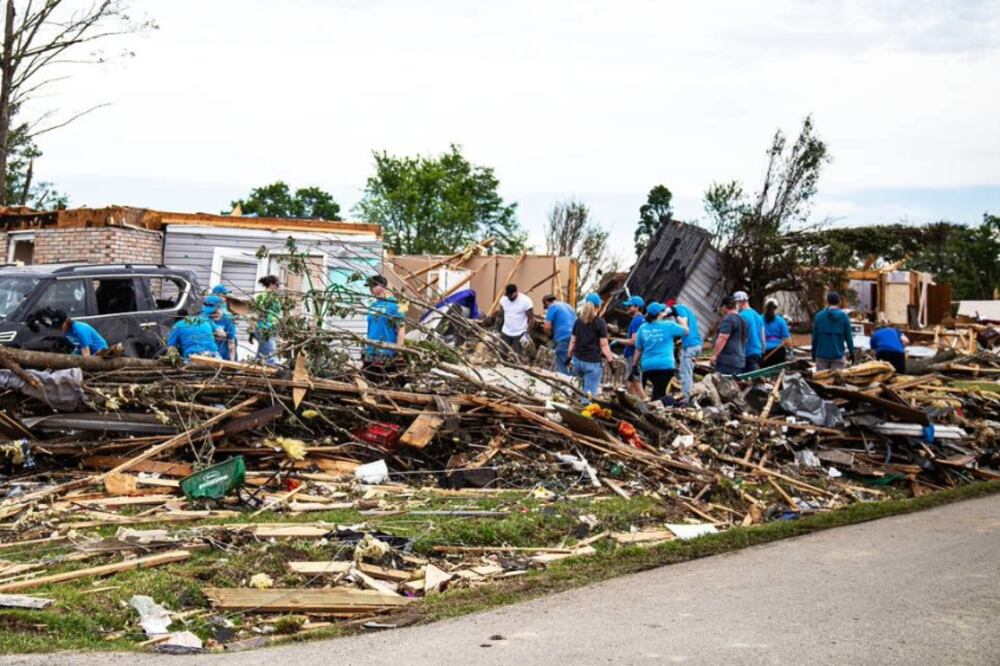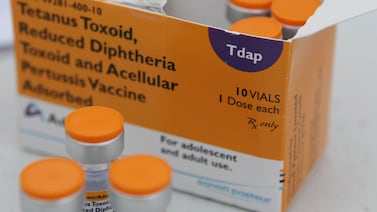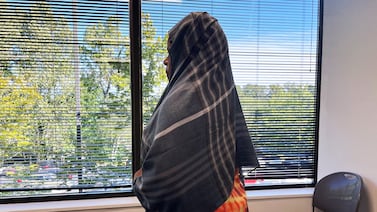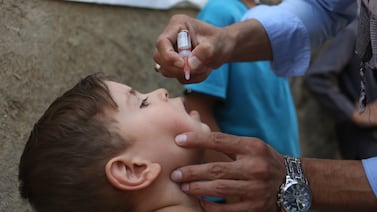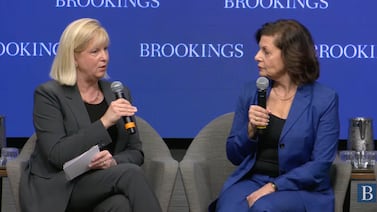Public health, explained: Sign up to receive Healthbeat’s free national newsletter here.
In Clay County, Kentucky — one of the nation’s poorest counties — a single mobile van and a stack of gas station gift cards had long been a lifeline for rural patients.
The federal pandemic relief funding approved in 2021 enabled AdventHealth Manchester, a local rural health clinic, to continue operating a van service that transported rural patients to specialty appointments hours away, helping them access care they otherwise couldn’t.
For millions of Americans living in remote areas, simply getting to a doctor or nurse practitioner can be a daunting challenge; access to health care requires more than a Medicaid card.
“Transportation access is a huge problem for many who don’t have a car and can’t get themselves to the doctor,” said Tawnya Brock, who conducts national assessments of rural health clinics and works locally at AdventHealth Manchester. “The ability to buy and offer Covid testing was instrumental, but keeping our van operational helped continue bringing patients in for nearby services, like MRIs or CT scans, while our rural health clinic providers were newly overloaded with Covid demand.”
At UNC Chapel-Hill’s Rural Health Clinic, Covid-era funding allowed staff to purchase a van and begin this same crucial transportation service for patients in Durham’s nearby rural areas.
As part of the Trump administration’s widespread health spending reductions, any remaining grant funds to rural health clinics were rescinded on March 25. Health and Human Services communications director Andrew Nixon defended the cuts, stating the government would “no longer waste billions of taxpayer dollars” on a pandemic that “Americans have moved on from years ago.”
Keeping these van services operational was one of many small but transformative ways pandemic-era grants helped rural health clinics serve patients.
As the Covid-19 pandemic surged across America in 2020, causing 375,000 U.S. deaths that year, health care systems across the country buckled under the strain. In response, the federal government allocated over $4 billion in relief funding to state and local health agencies, expanding their capacity to track infections, conduct testing, and provide vaccinations.
A small share of that funding went to the 5,600 rural health clinics across America, from southern Florida to northern California. These federally designated clinics serve areas with limited access to hospitals or other health care infrastructure — and are often the only point of care for 62% of rural Americans, roughly 39 million people, many of whom are uninsured. The pandemic marked the first time in their history that these rural clinics received direct federal support.
Although the federal money was targeted for Covid-specific needs, its impact extended further, helping clinics hire staff, expand services, and reach patients who might have otherwise gone untreated. Clinics were able to offer telehealth appointments for substance abuse and mental health issues, offer pediatric screenings in public schools, and even provide dental care.
Rural health clinics are underappreciated and undervalued, said Sarah Hohman of the National Association of Rural Health Clinics.
“Rural health clinics bear so much responsibility with so little [funding],” Hohman said. “So many policy makers in Washington don’t realize how critical [these clinics] are.”
Rural clinics handle more chronic disease, get less funding
Created in 1977 as part of a federal program to support underserved populations with limited access to health care, rural clinics vary widely in their size and capacity. Some operate out of a single trailer with one nurse practitioner; others are connected to larger hospital systems with more robust staffing. But even the better-resourced clinics struggle to keep up with overwhelming patient demand.
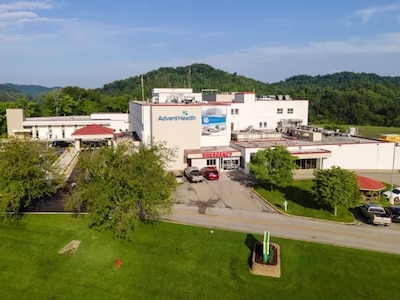
Unlike federally qualified health centers, which receive annual federal grants and can apply for supplemental funding, rural health centers are financed by bare-bones per-visit reimbursements from Medicare and Medicaid. Lacking federal funding and patients with private insurance, or those who are capable of paying out of pocket, these rural clinics operate on a shoestring. Because Medicare and Medicaid rates are fixed, longer appointments or more complex services result in a financial loss for providers. In rural areas, juggling multiple chronic conditions in a single patient visit is the norm.
Rural communities have a higher prevalence of chronic disease, addiction, and mental health issues, cancer, and obesity. They are also more likely than their urban counterparts to die a preventable death, according to the Centers for Disease Control and Prevention. In Clay County, Kentucky, where there is one doctor for every 2,800 residents, these disparities are especially pronounced — poverty, obesity, and life expectancy rates are significantly worse than the national average. In comparison, New York City’s Health + Hospitals system alone has one doctor for every 187 residents.
Brock said that, especially in poor regions like Clay County, there aren’t enough primary care providers to meet patient demand. One nurse at AdventHealth Manchester’s clinic sees over 20 patients a day — managing everything from walk-ins to substance abuse counseling.
In remote communities, reaching a clinic can require hours of travel.
“A few times a month, I’ll have patients who suddenly lose their hearing, and not be able to get to the clinic in time to get it treated. If it’s not treated in 48 hours, these patients permanently lose their hearing,” said Emily Waller, an audiologist in rural Illinois who worked at a public health care system during the pandemic.
Even when clinics have openings for preventative and non-emergency care, people in these areas often don’t make the time to come. “[We have] a lot of opioid addiction and financial challenges. It’s hard to get these patients for a mammogram or a colonoscopy when they’re worrying about whether they’re going to have food on the table that night, or have to go to rehab and lose their children the next,” Brock said.
In 2023, Leonard Carpenter, a Native American veteran in Butte County, California, missed what would have been his first chemotherapy appointment. With clinics overwhelmed and appointments scarce during the early pandemic, he had to wait five months for the next available slot. By then, his cancer had progressed beyond treatment. He died three months later in his apartment, surrounded by volunteers from the Chico-based emergency shelter nonprofit SafeSpace.
“When he died, 30 or 40 of us packed into his home and put him in a cardboard coffin box. We all wrote signs on it,” said Ashley-Michelle Arnold, a SafeSpace volunteer.
Covid funding gave rural clinics a brief reprieve
The $632 million in Covid relief funding provided an average of $138,000 to each rural clinic. The money supported staffing, overtime pay, retention bonuses, and makeshift expansions like parking-lot tents and mobile testing units.
“It was life-changing, allowing them to fill the funding gaps that other public health systems, like FQHCs, have always had,” Hohman said.
In addition to her administrative role at AdventHealth Manchester, Brock travels the country conducting surveys of rural health clinics for QuadA, one of four organizations authorized to accredit rural health clinics under Medicare guidelines. Brock said many clinics want to expand services but can’t afford to hire the needed staff.
Hohman said clinics are eager to expand into areas like mental health and specialty care because the need is clear, but the upfront cost of hiring makes it difficult. Since they only get reimbursed once providers start seeing patients, it can be financially risky to bring on new staff.
The pandemic grants showed how funding makes a difference. But because they were tied to a public health emergency, Hohman said they’re a difficult precedent for long-term support.
Rural health centers don’t have the staff or money to systematically collect data for policymakers. That makes it hard to prove the need for more support — or to track how many clinics are at risk of closure.
“So much of my job is explaining to decision-makers in Washington what rural health clinics are, how they are paid, and how that payment looks different than that of federally qualified health centers or other public health care centers. And the data just isn’t there,” Hohman says.
The NARHC has lobbied lawmakers to introduce bills that would provide workforce grants to rural clinics to help pay salaries of new workers before they start generating reimbursement. These could be a critical lifeline for the clinics, Hohman said.
“The reality is we need more of these clinics, not less. Workforce grants for RHCs would allow patients greater access to care — covering hiring costs and the initial salaries of providers before they start to generate reimbursement,” she said.
“These clinics have the patient volume, the demand, the desire to offer more care. But right now, they just can’t.”
Even as the NARHC pushes for long-term solutions through workforce grants and policy support, recent events like the devastating tornado in southeastern Kentucky have laid bare the unpredictable challenges rural clinics continue to face.
On May 16, the storm swept through Laurel and Pulaksi counties, nearby areas served by the AdventHealth Manchester clinic. Twenty-nine people died, and 1,532 homes were destroyed, said Gail Timperio, readiness response coordinator for the Southeast Kentucky Healthcare Coalition.
Brock said the AdventHealth Manchester clinic’s manager lost her home and everything she owned.
Volunteers flooded the area in the days following the storm, offering cleanup services, gas cards, and even vehicles to those who lost theirs in the destruction.
Though the link is not fully understood, climate change may be creating favorable conditions for increasingly frequent and violent storms, including tornadoes. These localized, violent natural disasters could add pressure on rural health clinics that are stretched for resources to provide care for their population.
For half a century, staff at rural health clinics have dedicated their lives to providing for medically underserved patients across the country. From the pandemic emergency to the widespread devastation caused by the recent tornado, Brock said these practitioners have carried the weight of entire communities.
“I see pride in our nurses, doctors, and all rural health care providers. I see their grit, digging in day after day to do what had to be done. I see the deep bond with their towns, and the trust their communities placed in them. It is much more than medicine, it is love, sacrifice, and an unwavering commitment to care.”
This story was produced in partnership with the Health & Science Reporting Program at the Craig Newmark Graduate School of Journalism at CUNY.

